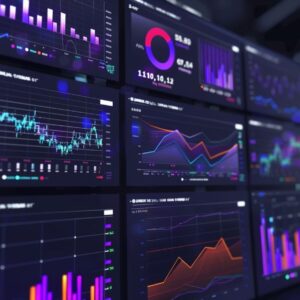Laser printers for coding and marking produce high contrast codes and graphics on many substrates. They use either fiber, CO2 or UV laser technology to mark by ablation, etching and foaming.
They operate without consumables so you don’t have to worry about replacing ink or ribbons. And they perform much more quickly than traditional ink jet systems.
1. High Speed
With a bank of semiconductor diodes producing photons, fiber optic cables channel and amplify them to form a laser beam. This means that these lasers are much more efficient than their CO2 counterparts, resulting in lower operational costs.
Industrial laser marking is the use of lasers to create chemically and physically permanent marks on a variety of materials and products. Lasers can mark through etching, ablation, foaming and laser scribe imaging. They work well on a wide range of substrates including plastics, bare metals and glass.
A specialized 3D printer can reproduce models of an individual patient’s skull or body part, allowing surgeons to visualize and practice surgery in advance, leading to a better outcome for the patient. Sintratec’s newest fiber laser system can even produce these models in metal, opening up new opportunities for manufacturing and medical applications.
2. High Precision
Like an impact printer or an ink jet laser printer that uses ribbon and moulded laser font to print on products, fiber laser marking machines can mark machine-readable codes, graphics and variable data onto a wide range of substrates. Unlike traditional CO2 lasers, fiber lasers can produce more power at the mark and offer a higher mark contrast for more legible results.
The resulting mark is also durable and will not fade due to environmental changes. It can even serve as an anti-counterfeiting measure.
Fiber laser markers can also help manufacturers meet the demands of fast production schedules. They can apply high-contrast marks to tough products such as metals and plastics. They can be used in industries like beverage, extrusion, and pharmaceuticals to increase product output and ensure that codes are marked clearly.
3. Easy to Operate
Many fiber laser markers can use design files saved in a variety of formats. These include vector or bitmap files, and the machine can also be programmed to mark with a specific width of laser beam.
Manufacturers also strive to make their marking machines easy to operate. They may offer recommended settings based on the type of material being used or different thicknesses or depths. Some also offer a simple, intuitive software interface.
This makes the process easier for a company to manage and control, especially when compared with traditional manufacturing processes that require long and risky supply chains or costly capital equipment. In time, this could help drive down indirect and overhead costs as well, even if additive printers don’t save on direct manufacturing costs.
4. Easy to Maintain
Laser cutting is a subtractive process that shapes 2D design files into 3D objects. Lasers cut through material at a high rate with extreme accuracy to turn designs into real products. It is used in a variety of applications from fabric to wood to metal.
Laser manufacturers rely on the three largest factors in laser productivity: laser power, machine dynamics and material exchange. Increased laser power increases hourly operating cost but decreases overall production costs per part.
But if your machine’s motion is slow or its pallet changer swaps a sheet every 15 seconds, then even higher laser power doesn’t help you meet productivity goals. That is why preventative maintenance and the right resources are important for laser cutting. Mazak Service is here to help.
5. Low Maintenance Costs
Unlike other laser coding systems, fiber technology is less sensitive to environmental conditions. This results in lower operating costs and maintenance expenses. It also makes it easier to integrate these devices into new production environments and operate them with different products.
As selective laser sintering (SLS) becomes a viable rapid manufacturing method for end-use parts, engineers can design with the capabilities of the final fabrication process in mind – known as “design for manufacturing.” This can alleviate weak joints and reduce assembly time.
The laser-based additive manufacturing process uses powdered material that is fused together by the laser beam. This makes it an excellent choice for metal processes like etching and annealing. Additionally, these printers can work with a variety of materials including plastic, ceramic, and matte metals.



